Meningitis is the medical term for a dangerous and potentially fatal infection of the membranes and cerebrospinal fluids (CSF) that cover the spinal cord and the brain. Viral and bacterial infections are the most common causes of this condition, but it can also be provoked by certain types of fungal infections.
Meningitis that is caused by various types of bacterial infections is usually more dangerous than viral meningitis. Patients who have suffered from meningitis have been known to suffer from hearing loss, learning problems, brain damage or sometimes even lethal consequences.
Viral meningitis does not require any special form of medical treatment, because the human immune system is, in most cases, powerful enough to deal with this type of problem on its own, without the help of any medications. Meningitis may also cause the patient to suffer from loss of the arms or the legs, cognitive decline, seizures or stroke and the incidence of such consequences is estimated to be between 11 to 20 percent.

What Is the Death Rate Among Meningitis Patients?
According to the currently available statistics, in the United States, meningitis caused by bacterial infection is the leading cause of death in children who are between 2 and 18 years of age. The statistics also reveal that about 10 to 15 percent of all patients suffering from meningitis die every year because of meningitis, even after they receive the proper antibiotic treatment. These figures show that the prevention of meningitis is extremely important and the best way to prevent meningitis is to get vaccinated against meningitis.
How Do You Receive the Meningitis Vaccine?
The meningitis vaccine is usually given into the deltoid muscle of the arm, which is located just below the shoulder. Receiving the meningitis vaccine does not hurt more than any other vaccine you might have already received in the past. The more relaxed you are, the less it will hurt. Some people may experience slight discomfort in the arm, on the vaccination spot, but this usually passes on its own after two or three days.
What are the Potential Risks of the Meningitis Vaccination
Risks of meningitis vaccination are considered to be minimal. The vaccination site may be red or swollen for some time and some people complain about headache, malaise, fever or chills. There are very few serious risks associated with meningitis vaccine, but some patients have reported: high fever, hives, skin rash and swelling of the face and mouth. Breathing problems and seizures were also reported in small number of people who received this vaccine.
How Long Can you Expect the Effects of the Meningitis Vaccination to Last?
Meningitis vaccine against Hemophilus influenza type B (also known as Hib) is given to children younger than 5 years of age in several doses (3 to 4). The first dose is given at 2 months of age, than at 4 months, 6 months and then to 12 months old child. Kids who received this vaccine are protected for next 15 years or even more.
Pneumococcal Meningitis Vaccine
Children under 5 years of age may also receive pneumococcal meningitis vaccine (PCV7). A similar PPSV meningitis vaccine is recommended for adults and children exposed to increased risk of meningitis. Both of these vaccines will protect the person for next 3 to 5 years.
Neisseria Meningitidis Vaccine
There are two vaccines against Neisseria meningitidis (causing meningococcal meningitis), called MPSV4 and MCV4. MPSV4 is only vaccine for people over 55 years of age, while MCV4 should be given to older children (11 to 18 years of age) and in 0 risk group, to people from 2 to 55 years old. These protections also last from 3 to 5 years.
Most cases of the disease affect children under the age of 2 and between the ages of 16–21. It is estimated that one-third of disease cases affect those 65 or older. At least 12 different N. meningitidis serogroups have been identified, based on the chemical composition of their polysaccharides. Six of these serogroups cause disease: serogroups A, B, C, W, X and Y. While most cases of meningococcal meningitis are sporadic, outbreaks still occur.
- Targeted vaccines have been effective at reducing the public health burden of meningococcal meningitis across many regions of the globe. Glycoconjugate and now protein/OMV-based vaccines target most serogroups of N. meningitidis that cause disease.
- Recent protein-based vaccines now target N. meningitidis serogroup B. A suitable strategy for this serogroup has been elusive for so long. Future work in protein-based vaccine discovery seeks to discover broadly protective protein targets. Lipooligosaccharides and outer membrane vesicles are also under investigation for new targets for a broadly protective vaccine.
- New discoveries aim to create well-defined homogeneous vaccines for which the carbohydrate antigen structure-immunogenicity relationship can be better determined. These strategies use chemical and/or enzymatic methods to produce carbohydrates.
- Enzymatic methods to produce O-acetylated polysaccharides require recombinant production of the proper O-acetyltransferases and capsule producing enzymes. Enzymatic synthesis also requires significant time in the isolation of recombinant enzymes to sufficient purity and activity.
- Microarrays could dramatically streamline the discovery process because carbohydrate antigens would first be chemically attached to a microarray plate and then tested for immune response using clinically derived serogroup-specific antibodies in a high-throughput format.
- Lastly, while chemical and enzymatic synthesis of meningococcal carbohydrate antigens have shown promise on the research-scale, these methods still need to be optimized to manufacturing-scale levels. Future advances built upon current foundations in solid-phase chemical synthesis, enzyme production and chemoenzymatic synthesis are needed to help drive vaccine development forward.



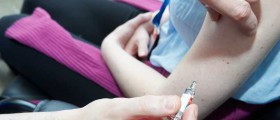
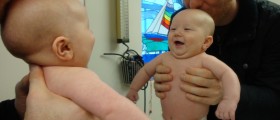

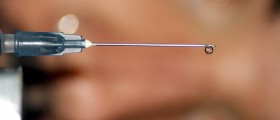
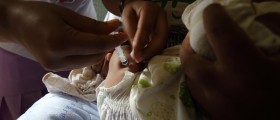



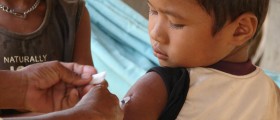

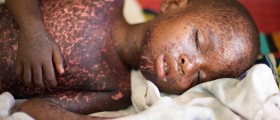



Your thoughts on this
Loading...